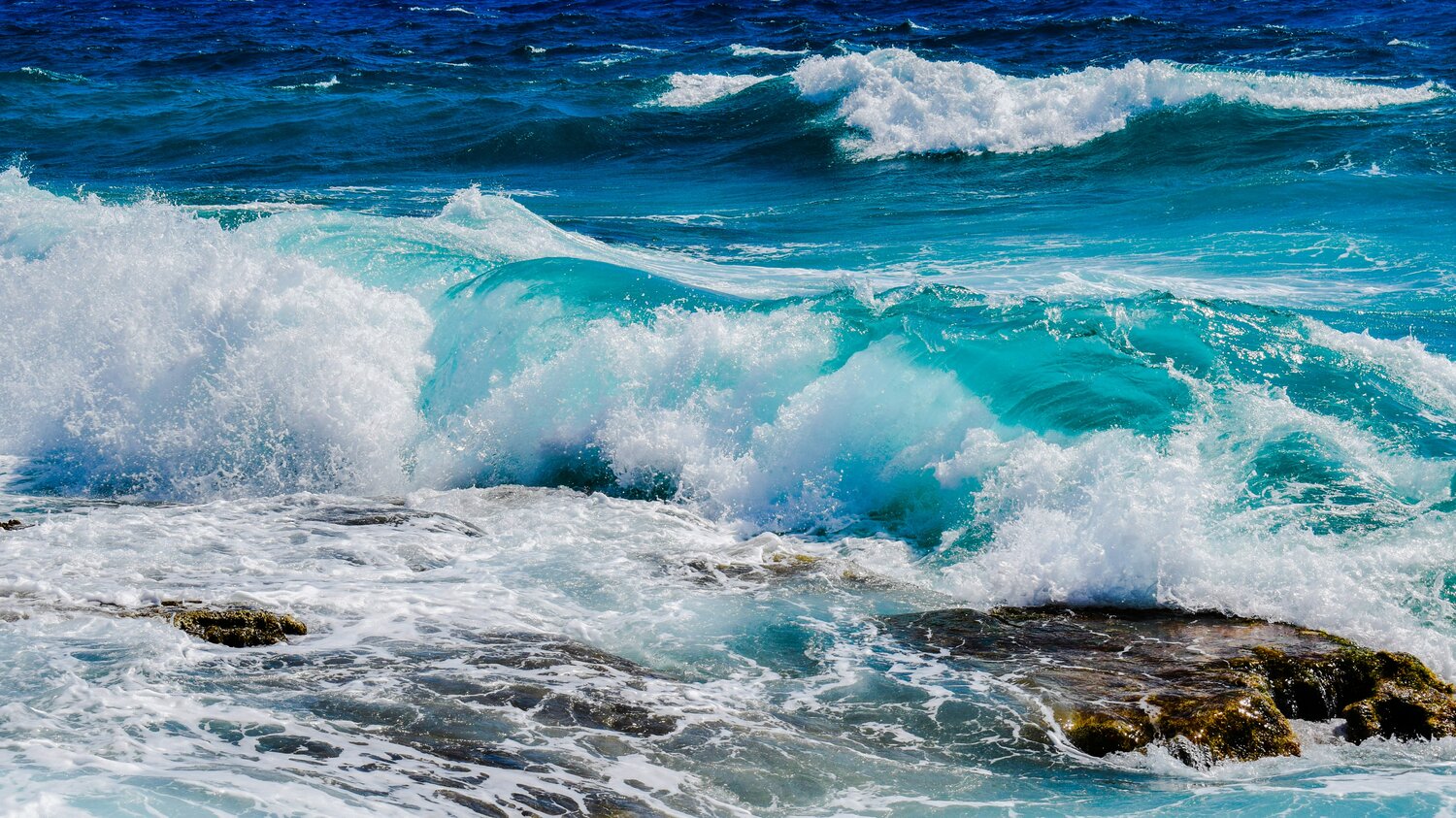Our new NorthStandard site is now live. There will be no new content or updates added to this site. For the latest information, please visit our new site north-standard.com.
Decarbonisation developments and challenges: Energy Efficient Technologies
News & Insights 31 March 2023
In our fifth of six blog posts, we explore the results of our 2022 Alternative Fuels survey and highlight which Energy Efficient Technologies (EETs) are currently at the forefront of our members’ thinking.

In our two previous blog posts, we looked at bridging fuels and emerging fuels. While both are critical to the shipping industry’s decarbonisation journey, ensuring vessels are as operationally efficient as possible will also contribute massively to achieving the IMO’s 2030 and 2050 targets.
IMO-2030 and IMO-2050
The shipping industry faces stiff challenges – within this decade and by the mid-century. IMO-2030 sets out a minimum 40% reduction in carbon intensity (CO2 emissions per transport work) by 2030 and 70% by 2050, as compared to 2008 levels. IMO-2050 targets a 50% reduction in annual greenhouse gas (GHG) emissions by 2050, and their phasing out by the end of the century. However, a 2023 strategy review may move the goalposts considerably closer, with a net-zero by 2050 target on the cards.
To meet these targets, the International Maritime Organization (IMO) introduced the mandatory requirements of Energy Efficiency Existing Ship Index (EEXI) and Carbon Intensity Indicator (CII) rating through recent amendments to MARPOL Annex VI. For more information on the latest regulations and amendments to MARPOL VI, see our ‘Looking to 2023’ blog post.

Exploring Energy Efficient Technologies
EETs, as the name suggests, are technologies aimed to improve energy efficiency, which is the ratio of output to input energy. Essentially, these are designed to optimize the vessel's performance by reducing the fuel consumption, operational costs, and emissions.
Currently, several EETs and potential vessel modifications are being considered to improve ship’s performance. Depending on ship type, size, age, and operational profile of the vessel, the following measures can be considered:
| Hull form optimisation | Hull optimisation focuses on minimising the wave resistance and friction between water and hull. The reduced frictional resistance increases energy efficiency of the ship, particularly at reduced speeds. Below are ways in which hull hydrodynamic performance may be improved:
|
| Hull coatings | One way of lowering the frictional resistance is to improve the smoothness of a hull by means of coatings that reduce fouling. In recent years there has been a lot of development in the coating technology, e.g. introduction of hydrogel, a component that traps a microscopic layer of water on the coating’s surface, smoothing the water flow around the hull. The use of hydrogel containing coatings makes the surface of the hull behave like a liquid on a microscopic level. This not only deters fouling from occurring in the first place, but also significantly reduces hull friction. |
| Air lubrication | Air lubrication is a method to reduce the frictional resistance between the ship’s hull and water using a sheet of air or air bubbles. This saves energy and cuts down on fuel consumption. An automation system regulates the compressors/blowers depending on speed. In ideal situations, an air injection system can achieve up to a 15% reduction of CO2 emissions together with significant fuel savings. As compared to ships with V-shaped bottoms, this system is more effective on flat bottoms as the air on a V-shaped bottom will flow away more easily than on a flat bottom. A schematic illustration of an air lubrication system is provided in MEPC.1/Circ.815. |
| Propellers and rudders | Numerous devices have been designed for improving the ship’s energy efficiency by recovering as much as possible of the rotational energy in the flow from the propeller, or to provide some pre- or post-rotation of the in-flow into and after the propeller to ensure best performance. The Global Maritime Energy Efficiency Partnerships (GLOMEEP) website provides details of various propulsion improving devices (PIDs), and mentions that a likely reduction potential for various PIDs is in the range of 0.5% to 5% on main engine fuel consumption. |
| Electric (battery powered) propulsion | In recent years, pure battery-electric propulsion, using lithium ion (Li-ion) batteries, has been successfully applied on small, short-sea vessels. The potential for batteries in combination with a two-stroke main engine in a hybrid system is being evaluated for larger ocean-going vessels. |
| Hydrogen fuel cells | Hydrogen fuel cells work in a similar manner to an electric battery, i.e., they convert chemical energy into electrical energy using the movement of charged hydrogen ions across an electrolyte membrane to generate current. There they recombine with oxygen to produce water – a fuel cell’s only emission, alongside hot air. They do not deplete or need charging and have a higher power density and lower weight than batteries. However, they are expensive and any leakage, if not handled properly, may cause hydrogen accumulation and explosion. Therefore, the hydrogen storage place and fuel cell cabin require appropriate measures to ensure safe integrity levels. |
| Shore to ship power (cold ironing) | This is the process of providing shoreside electrical power to a ship at berth while its main and auxiliary engines are turned off. When a ship is in port, auxiliary engines (generators) are commonly used to provide power for cargo operations, emergency equipment, cooling, heating, lighting as well as for domestic use. By simply turning off generators and plugging in to an electrical supply point in the ports, fuel consumption saving and subsequently reduction of noise and air emission may be achieved. Smaller vessels with low power requirements can make use of normal grid voltage and frequency. However, for larger vessels with high power requirements only limited ports may be able to provide cold ironing. |
| Waste heat recovery systems | A waste-heat recovery system (WHRS) recovers the thermal energy from the exhaust gas and converts it into electrical energy, while the residual heat can further be used for ship services (such as hot water and steam). The system may consist of an exhaust gas boiler (or combined with oil fired boiler), a power turbine and/or a steam turbine with alternator. Redesigning the ship layout can efficiently accommodate the boilers on the ship. There is potential for a reduction in main engine fuel consumption estimated at 3% to 8% which will contribute to overall emissions reductions. Waste heat recovery is well proven onboard ships, but the potential is variable depending on the size, numbers, usage and efficiency of the engines on board. Furthermore, these measures are usually not relevant for retrofitting, due to large costs and efforts related to redesign, steel work, extra weight, etc. |
| Carbon capture and storage | This technology is at the very early stage of development for ships. It involves the isolation and capturing of carbon emissions from the ship’s exhaust and preventing them from entering the atmosphere. However, suitable carbon capture, liquefication, storage and transfer systems are needed to implement this method. Thereafter, the carbon can either be stored permanently underground in geological formations or utilised in carbon-consuming industries. |
| Solar panels | Solar panels are devices that convert light from the sun into electricity. Solar panels on ships are not common at present, but some installations have been installed on certain types of ships including car carriers, bulkers, passenger ferries and smaller domestic vessels by using marine grade solar panels. This solution may not suit container vessels because of the space required. The technology is in its infancy and is expected to become less expensive over time, but the panels are unlikely to become much more efficient or less space consuming. |
| Wind assisted propulsion systems | Wind-assisted propulsion systems (e.g., sail, kite, fixed-wing, Flettner rotors) utilise an old concept with a modern edge. The IMO has recognized this technology and included the effects of wind propulsion in MEPC.1/Circ. 815. However, it is considered as an auxiliary propulsion system that augments the primary propulsion system. In fact, most wind-assisted propulsion systems require a secondary source of energy to be operated. For example, Flettner rotors need to be started up by motors to develop their aerodynamic thrust forces. Clearly, the availability of wind is the most relevant factor for these systems to work well. Operational costs (maintenance, spare parts, replacement of components, etc.) need to be considered in addition to the fuel saving potential. |

Under the IMO-Norway GreenVoyage2050 Project, “A Practical Guide to the Selection of Energy Efficiency Technologies for Ships” has been published by the Global Industry Alliance to Support Low Carbon Shipping (Low Carbon GIA). Together with its accompanying assessment tool, this guide provides guidance on considerations and operational practices that should be taken into account when selecting relevant EETs.

In our 2022 Alternative Fuels survey, members felt hull coating was the most effective measure, followed by hull optimisation and carbon capture. Cold ironing was also suggested as a potentially effective option, along with hydrogen fuel cells. Wind-assisted propulsion and waste heat recovery systems were also cited but were generally less popular.
Those favouring carbon capture were mainly tanker operators, while members who preferred wind-assisted propulsion tended to be operators of bulk carriers.
Support from Standard Club, part of NorthStandard
We aim to help our members and shipowners across the globe to achieve their decarbonisation goals – safely, sustainably and successfully.
By concentrating on a supportive role that informs and advises, rather than instructs, we aim to give members and brokers all the information they need to make an informed decision.
Our dedicated Alternative Fuels webpage gives members access to a wide range of alternative fuels information, including energy-efficient technologies, emerging and bridging fuels, articles and advice, plus support tools from videos and podcasts, to events and webinars. Members can also contact our team to tap into decades of expertise and experience in the alternative fuels sector.
カテゴリー: Alternative Fuels
